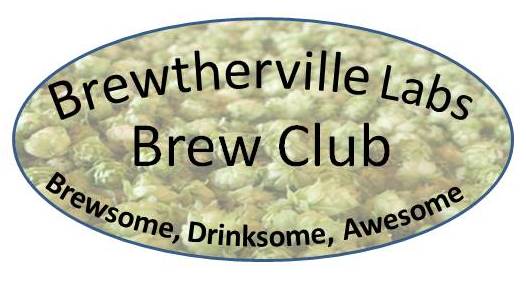While we're still waiting for Cracked Car Kosch posting #'s 3,4,5 and 6; and the new beer (I won't spoil it).. I wanted to post a few thoughts for our next round.
First, a few terms.
Grist: the crushed grains that go into the...
Mash Tun (proun: Mash toon): the pot where you heat the grist. Interestingly enough, typically made out of a 5 gal sports cooler.
Mash: it's when you use all grains (grist-no malt extracts or syrup) to make your wort. Also a fairly rad TV show.
Sparge (NOT proun: Spooge): once the grains are mashed at certain temperatures for certain times, you need to rinse all of the extra sugars out of the grains. Got to get the goodness out, SAY YEAH! [That's the Reverand Al Green BTW] This is done in a...
Lauter tun (proun: Lawter Toon): The vessel that allows the water to filter through the grist bed extracting any sugar that's left. We want the sugar. Sugar=alcohol.
Balling Degrees: Scale indicating density of sugars in wort. Devised by C J N Balling. OR: "The members of Brewtherville Labs have shown varying Balling Degrees."
Brake: the crap/sludge/schmeg/spooge at the bottom of the boil pot or fermenting pot (more on that later).
Brewtherville Labs is stepping up it's game. We've had success after success with the extract brews. So far, our "mistakes" have turned into gold (mostly). We could keep on keepin on, but I say increase the Balling Degree (which has very little to do with sugar).
Here's a general layout for an all grain batch.
Select your grist. There are many different kinds and they each have their own qualities. For example, Crystal 20L is very lite and can be used for lighter colored ales. Crystal 80L gives a nice darker amber color. These are roasted to different degrees. Pilsner malted barley is very light and obviously used for Pils, chocolate malted barley is used for stouts. With an all grain mash, you can create your own combination, like a Black Imperial IPA or a great hoppy lite beer (great idea Danny). The combinations are endless.
Second step: Mash the grist. This can be done in a number of vessels, but we'll do it in a lauter tun (which I am in the process of making. You need to steep the grist in ~152deg of water for about an hour. Drain the wort into your boiling vessel (recycle the first few quarts back into the lauter tun to get rid of any big grains that come through).
Sparge the grist with clean ~170 deg water to kill the enzymes that are converting carbs to sugar and wash out the good sugar. After the sparge you should have about 6.5-7gal of wort. This wort will boil down after a while. You can separate the wort into two boiling pots if you don't have a nice big 15 gal copper kettle pot (but really who doesn't) and combine them later. I have a line on a nice big 10 gal crab steamer pot, but I'm not sure our normal burners are going to handle the volume. We'll see.
After you have collected the wort, take a hydrometer reading. Are we at the OG we want? If not, boil down a bit to concentrate. If we're over, either dilute with water or suffer the consequences of a 10% ABV brew. Now, it's time to boil and add hops and all that good stuff.
After this, it's kind of business as usual, but for a few tricks...
How to clear the crud.
1. Add Irish moss at T-15 min. This will act to gather brake so it does not end up in the final beer.
2.Cool the wort in the boiling tun. We're going to start using a wort cooler. I'm making one on the cheap. As the wort cools, certain proteins and schmeg that we don't particularly want in our beer (I don't speak for Jason) will precipitate out of solution and fall to the bottom. We can do a whirlpool stir to get the brake to the middle of the boiling tun before we rack to the fermenter (where they won't end up).
3. Bonus round! We filter the wort through a whole hop bed which will collect these proteins and add a little hoppy goodness to the brew. I've ordered 3 lbs of whole hops from a grower/distributor in Oregon. This will also add a good bit of oxygen to the wort to help the yeast ferment.
Carbonation:
The dude at the Thirsty Brewer (who we love) gave me the goods on priming the beer for bottling. [He also gave me the equation for calculating how much malt extract to use in the wort to get a desired OG/FG, which as a pre-2 beer scientist, I love] He suggested using malt extract instead of corn sugar. This has pros and cons. It can affect the taste of the beer. Malt extract will impart a larger body which you may not be looking for. Corn sugar is easy but has very little flavor and character, but is highly effective (even in the fermentation phase). Basically different beers require different amounts of priming sugar. Two things can affect the amount of carbonation. First, incomplete fermentation can cause an excess amount of sugar to be in the wort when the beer is conditioned. Second, the amount of priming sugar was not optional. Either the volume was too low/sugar concentration too high; or vise-ah vers-ah.
Hops:
For bitterness your hop selection should be dependent on your need. If you want hoppy bitterness, you want a high alpha acid content and add it early in the boil (like 60 min). More aromatic hops (larger Beta values) should be added toward the end of the brew.
That's all for now. I'm out.
Anyway, I've learned a few tricks that should improve our beer 3.14159265 (prime) fold.
